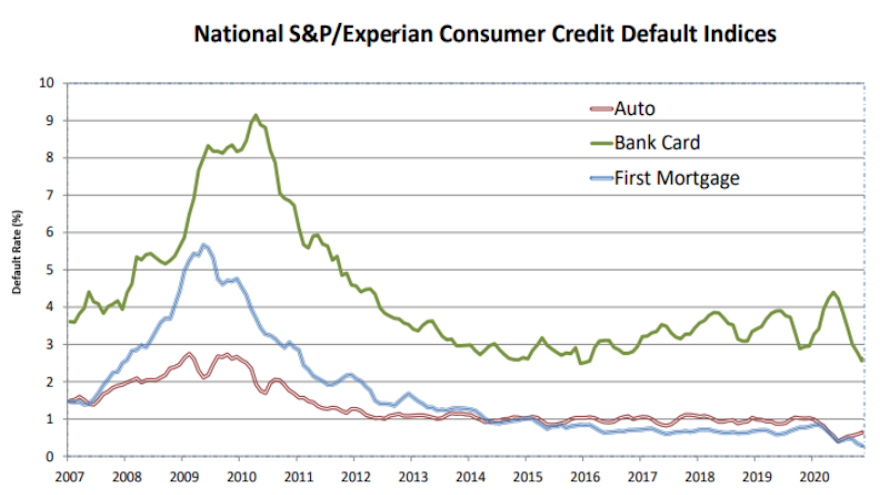Auto defaults remain unchanged in December

Chart courtesy of S&P Dow Jones Indices and Experian.
By subscribing, you agree to receive communications from Auto Remarketing and our partners in accordance with our Privacy Policy. We may share your information with select partners and sponsors who may contact you about their products and services. You may unsubscribe at any time.
NEW YORK –
Much on the default front remained unchanged to close 2020.
Among the readings to finish the last year in that category was auto default.
According to data through December released Tuesday by S&P Dow Jones Indices and Experian, the December auto default metric came in at 0.64%, which was unchanged from November.
The reading, however, was 38 basis points lower than the last month of 2019. Analysts pinpointed the December 2019 reading at 1.02%.
December’s mark remaining unchanged also broke a streak of five consecutive months of climbing auto defaults. The upward move began with a record low posted in June at 0.40%
For more perspective, a decade earlier, the auto default reading landed at 1.77% in December 2010.
Subscribe to Auto Remarketing to stay informed and stay ahead.
By subscribing, you agree to receive communications from Auto Remarketing and our partners in accordance with our Privacy Policy. We may share your information with select partners and sponsors who may contact you about their products and services. You may unsubscribe at any time.
Elsewhere in the newest information analysts shared on Tuesday, the composite rate of the S&P/Experian Consumer Credit Default Indices — which represents a comprehensive measure of changes in consumer credit defaults — also stood pat in December, coming in at the exact same mark as autos at 0.64%.
While the first mortgage default rate ticked up 1 basis point higher to 0.20%, S&P and Experian noticed that the bank card default rate made the most significant move to finish 2020, rising 7 basis points to 2.63%.
Meanwhile, two of the five major metropolitan areas analysts track registered unchanged readings in December.
Dallas and Miami both stayed steady at 0.56% and 0.86%, respectively.
S&P and Experian noted that both Los Angeles and Chicago each decreased 2 basis points, to 0.35% and 0.52%, respectively.
New York went counter to the other four cities, but only slightly, as analysts spotted the default increase for the Big Apple at just 1 basis point to 0.42%.
Jointly developed by S&P Indices and Experian, analysts noted the S&P/Experian Consumer Credit Default Indices are published monthly with the intent to accurately track the default experience of consumer balances in four key loan categories: auto, bankcard, first mortgage lien and second mortgage lien.
The indices are calculated based on data extracted from Experian’s consumer credit database. This database is populated with individual consumer loan and payment data submitted by lenders to Experian every month.
Experian’s base of data contributors includes leading banks and mortgage companies and covers approximately $11 trillion in outstanding loans sourced from 11,500 lenders.


